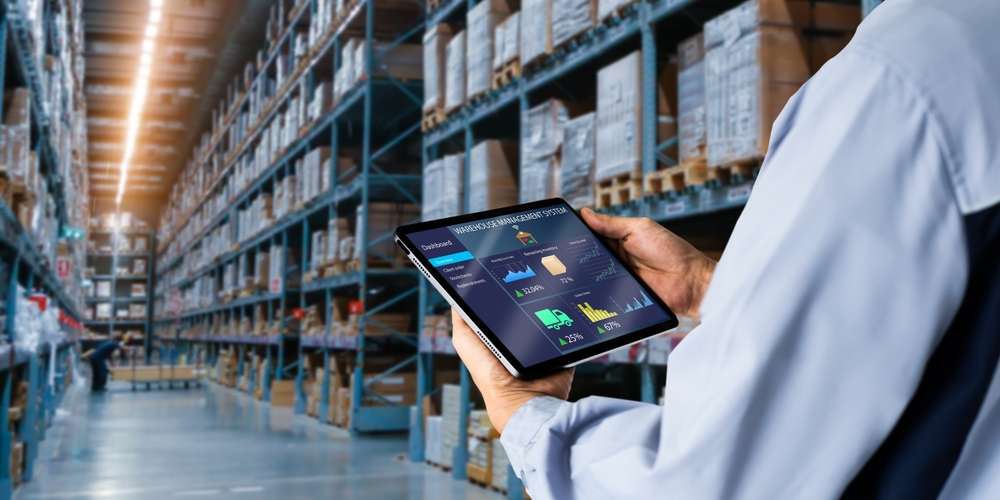Smart Solutions for Picking and Packing in Modern Warehouses
Selecting the right software for warehouse picking and packing is crucial for logistics efficiency. In the Netherlands, where e-commerce and distribution centers are rapidly expanding, automated solutions can help reduce errors, save time, and boost customer satisfaction. These tools support the optimization of processes such as inventory management, order fulfillment, and shipping. In this article, we explore the key features to look for and how to choose the right system for your business.

In today’s fast-paced logistics landscape, efficient picking and packing processes are crucial for warehouse success. As e-commerce continues to boom in the Netherlands, distribution centers are seeking smart solutions to streamline their operations. This article explores the key features of modern warehouse picking and packing software, how these tools can improve accuracy and speed, and why choosing scalable solutions is essential for growing businesses.
What are the core features of effective warehouse management systems?
Effective warehouse management systems (WMS) are the backbone of efficient picking and packing operations. These systems typically include inventory tracking, order management, and task allocation features. Real-time inventory updates ensure that stock levels are always accurate, reducing the risk of stockouts or overstock situations. Advanced WMS solutions also offer seamless integration with other business systems, such as enterprise resource planning (ERP) software, to provide a holistic view of the supply chain.
How does automation enhance picking and packing efficiency?
Automation is revolutionizing warehouse operations, particularly in picking and packing processes. Automated guided vehicles (AGVs) and robotic picking systems can significantly reduce the time and labor required for order fulfillment. These technologies work in tandem with software solutions to optimize routes, minimize travel time, and increase overall throughput. By implementing automation, warehouses can handle higher volumes of orders with greater accuracy and speed.
What role does data analytics play in optimizing warehouse operations?
Data analytics is a game-changer for warehouse optimization. Advanced picking and packing software leverages big data to provide insights into warehouse performance, identify bottlenecks, and suggest improvements. Predictive analytics can forecast demand patterns, helping warehouses prepare for peak periods and allocate resources efficiently. By harnessing the power of data, warehouse managers can make informed decisions that lead to improved productivity and cost savings.
How can voice-directed and vision-guided technologies improve accuracy?
Voice-directed picking and vision-guided systems are innovative technologies that are transforming the accuracy of warehouse operations. Voice-picking systems allow workers to receive audio instructions through headsets, keeping their hands and eyes free for the task at hand. This not only speeds up the picking process but also reduces errors by eliminating the need to read paper lists or handheld devices. Vision-guided systems use cameras and image recognition software to verify that the correct items are being picked, further enhancing accuracy and reducing returns due to incorrect shipments.
Why is scalability crucial when selecting warehouse software solutions?
Scalability is a critical factor to consider when choosing warehouse picking and packing software. As businesses grow, their warehouse operations must be able to adapt and expand without significant disruptions. Scalable solutions allow warehouses to add new features, increase capacity, and integrate with new technologies as needed. Cloud-based systems are particularly advantageous in this regard, as they can easily scale up or down based on demand, without requiring substantial hardware investments.
How do real-world warehouse software solutions compare in features and pricing?
When evaluating warehouse picking and packing software, it’s essential to compare features and pricing of different providers. Here’s a comparison of some popular solutions available in the Netherlands:
| Software Solution | Key Features | Cost Estimation (Annual) |
|---|---|---|
| Manhattan WMS | Advanced inventory management, labor planning, mobile applications | €50,000 - €100,000 |
| SAP Extended Warehouse Management | Real-time inventory visibility, cross-docking, integrated quality management | €75,000 - €150,000 |
| Oracle Warehouse Management Cloud | AI-driven task management, 3D warehouse visualization, predictive analytics | €60,000 - €120,000 |
| Infor Supply Chain Execution | Voice-directed picking, multi-site inventory visibility, labor management | €40,000 - €80,000 |
| HighJump Warehouse Edge | Adaptable workflows, business intelligence reporting, mobile-first design | €30,000 - €70,000 |
Prices, rates, or cost estimates mentioned in this article are based on the latest available information but may change over time. Independent research is advised before making financial decisions.
Selecting the right picking and packing software is a critical decision that can significantly impact a warehouse’s efficiency and bottom line. By focusing on essential features such as automation, data analytics, and scalability, businesses can position themselves for success in the competitive logistics industry. As technology continues to evolve, warehouses that embrace these smart solutions will be better equipped to meet the growing demands of e-commerce and distribution in the Netherlands and beyond.
The shared information of this article is up-to-date as of the publishing date. For more up-to-date information, please conduct your own research.






